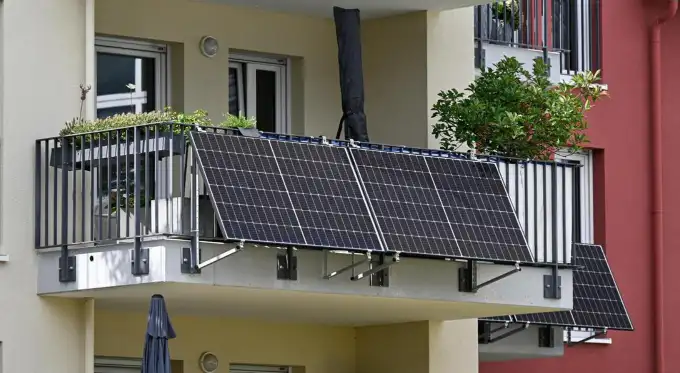There’s a new type of small-scale solar that is bringing solar PV to a new segment of customers. It began in Germany where it’s called balkonkraftwerk, or “balcony powerplant”, but it’s also known as plug-in PV, balcony solar, and micro PV. Balcony solar has already been widely adopted across Germany and Spain, and it is now being rolled out in other parts of Europe. In early 2025 Solar Power Europe released a report called Plug-in solar PV that described it like this:
“Plug-in solar photovoltaic (PV) is a fast-growing and popular form of renewable energy generation.
It has established itself quickly in the German market, and is increasingly present in other markets,
such as the Netherlands or France. In 2025 it will be legalized in Belgium. The idea of plug-in PV is
this: by simply connecting 1-2 PV modules to the home circuit using a microinverter and a cable
with a standard plug, prosumers can install a small PV generation system by themselves, saving
money and time.”

How is this different from the type of solar that Merlyn Power normally installs? Solar installations in Ontario are heavily regulated to ensure safety and grid reliability. Most of our installations include between 15 and 40 panels and produce 6 to 10 kw of electricity. We spec our systems to offset up to 100% of your home’s electricity usage. That’s because Ontario uses a system called net metering allowing our customers to carry forward credits from the sunny summer months to cover their bills in the winter. Because of the size of these solar systems, a significate part of the cost goes to installation, electrical inspection, and utility hookup fees. Net-metering is a great way to reduce your electricity costs and your carbon footprint, but it only makes sense for homeowners. It leaves out renters, condo-owners, and anyone who can’t afford a full-sized solar install.
In Germany, balcony solar systems have eliminated those extra costs. Because balcony solar systems in Germany do not exceed 800w of generation they can be plugged directly into a wall outlet feeding power to the home to use directly when the sun is shining. You don’t need an electrician to install them, and the registration is done through an easy online portal. In Spain, installing a pair of 300w panels can reduce electricity costs by 30%, and with a hardware cost as low as 400 euros and no installation or hookup fee, these small systems can pay for themselves in as little as 6 years.
Even the United States has begun taking steps to legalize balcony solar. In 2024, lawmakers in Utah began working to exempt plug-in solar from restrictive regulations that prevent their adoption. In 2023 an American solar startup called Gismo Power started working with the US Department of Energy to develop a UL standard for plug-in solar, but as of May 2025, none yet exists.
So what’s happening in Canada? A web search of the topic reveals that countless products are available for purchase, and they are marketed to Canadians as “balcony solar” or “plug-in solar”. But don’t be fooled. The regulations remain unchanged and devices that feed power back into your home through a wall outlet are currently prohibited. Without a UL standard, and new policy from the Electrical Safety Authority, renters and condo owners will have to continue to wait to join the solar revolution.
Given Canada’s projected growth in population and energy demand over the coming decades, our federal and provincial regulators need to prioritize breaking down barriers to adoption of these small-scale solar systems. During the first half of 2024 Germany installed 200 megawatts of balcony solar generation. Balcony solar can help address the cost of living crisis by reducing energy costs for renters, while helping Canada transition to a zero-carbon electrical grid.

